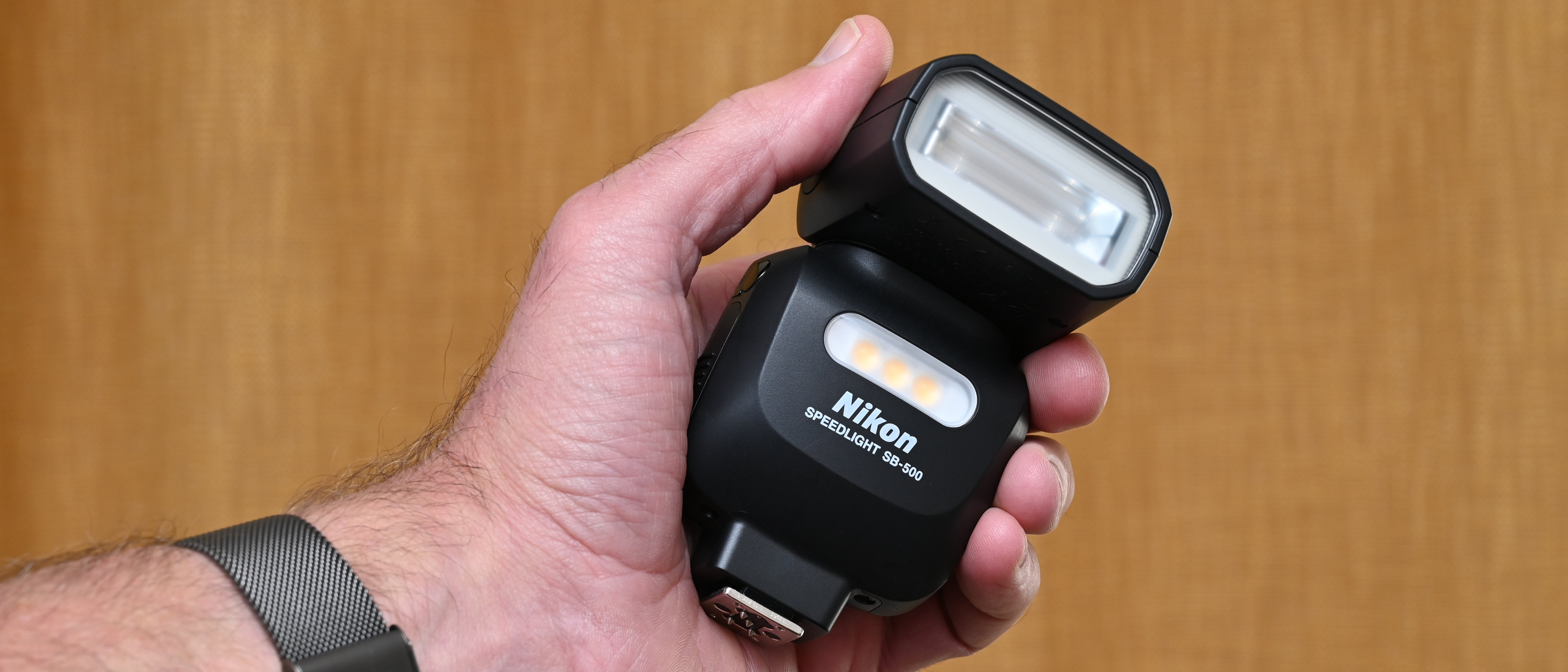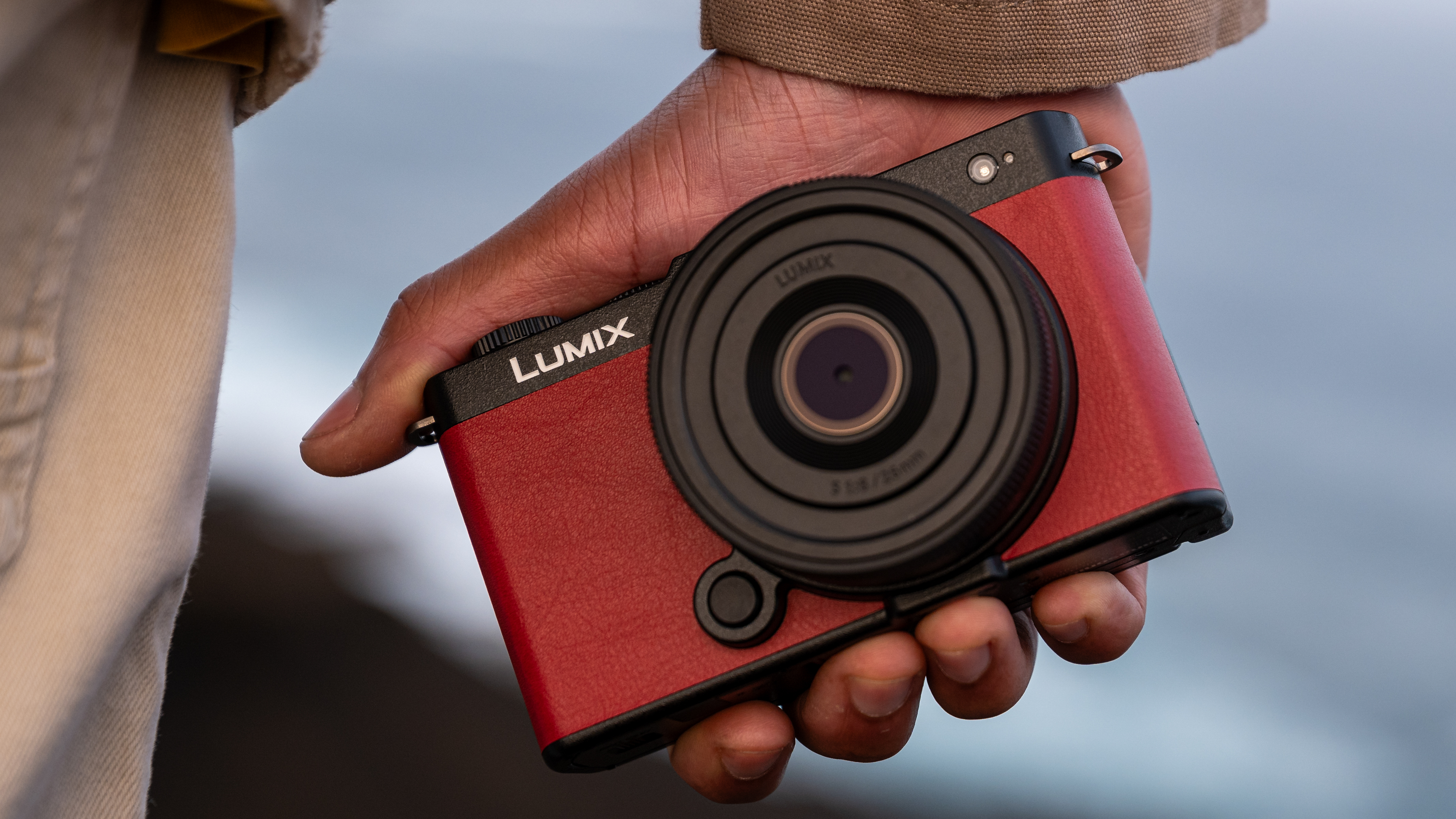Digital Camera World Verdict
This flashgun runs on two AA batteries and is just about small enough to slip into a coat pocket. It’s Nikon’s most basic Speedlight, with no zoom facility nor a rear info screen and barely any onboard controls, but it packs a decent punch in terms of maximum output. It also features a constant LED lamp with three power levels, handy for close-up stills and video. All things considered, it feels poor value at the price compared with independently manufactured Nikon-dedicated flashguns.
Pros
- +
Compact and lightweight
- +
Additional LED lamp
- +
Simple to use for the basics
Cons
- -
No zoom facility
- -
Sparce onboard controls
- -
Poor value for money
Why you can trust Digital Camera World
Small, simple and basic, the Nikon Speedlight SB-500 is the company’s most entry-level flashgun. It’s designed to fit in with Nikon’s Coolpix compact cameras as well as more up-market cameras with interchangeable lenses. It’s also compatible with the Nikon Creative Lighting System, featuring optical commander/slave modes, although the Commander mode only works with fairly recent cameras.
Specifications
Dedication: Nikon
Gn, ISO 100 (m / ft): Gn 24 / 79
Bounce range: 0 to 90 degrees
Swivel, left / right: 180 / 180 degrees
Zoom Range: 24mm (fixed)
Manual Power Settings: 1/1 to 1/128
AF-assist beam: LED lamp
Wireless: Optical commander / slave
Additional Flash Modes: HSS, RC, SS
Dimensions (W x H x D): 67 x 114.5 x 70.8 mm
Weight (excl batteries): 226g
Key features
When size matters, or at least the lack of it, the SB-500 is sufficiently compact and lightweight to take almost anywhere. However, compared with some independently manufactured Nikon-dedicated flashguns like the Nissin i40, which is even smaller, lighter and cheaper to buy, the SB-500 has a relatively limited feature set.
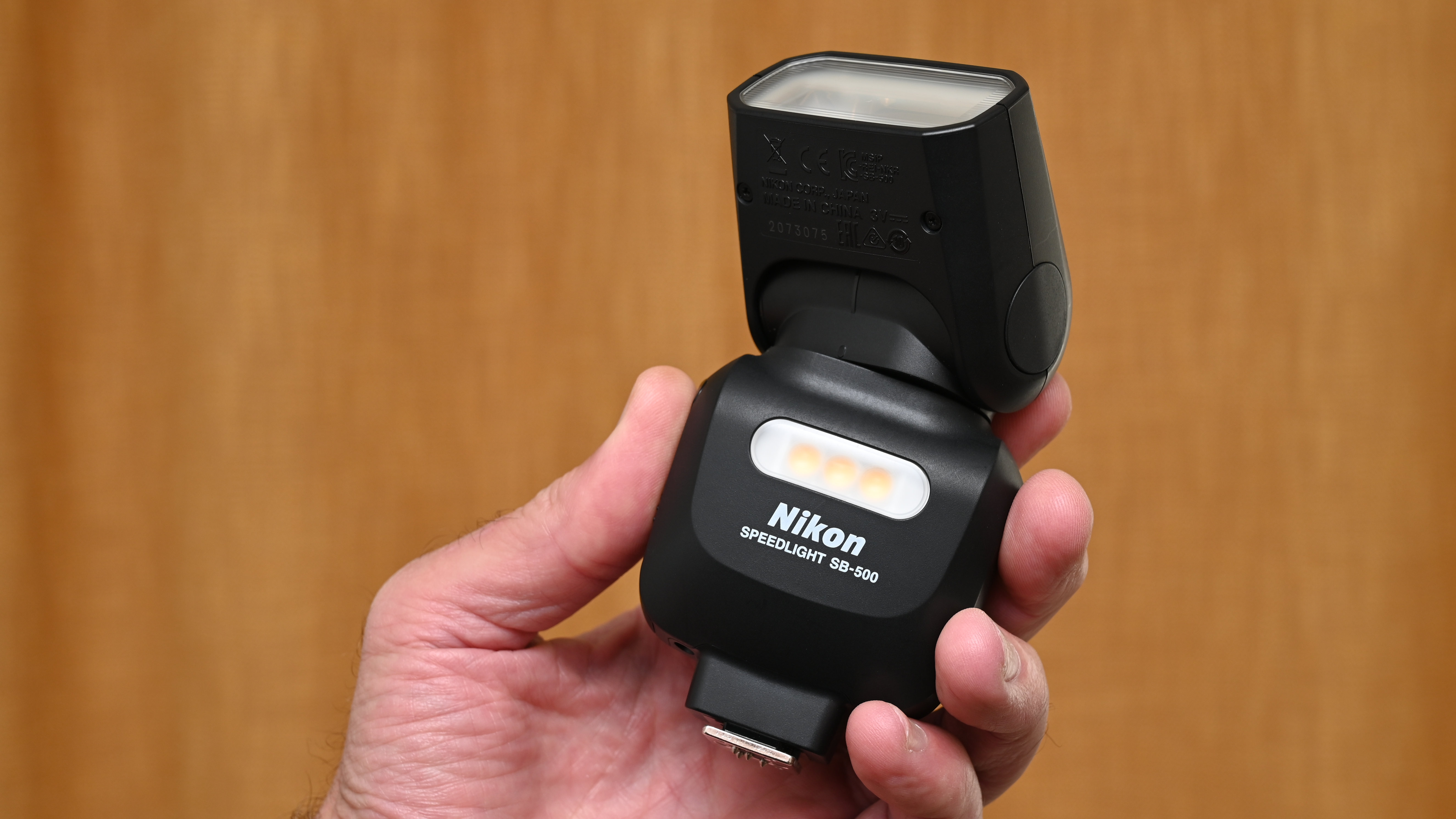
There’s no zoom facility for the head, which has a fixed beam angle that equates to a focal length of 24mm on a full-frame camera, or 16mm for DX (APS-C) format cameras. There’s also no flip-out wide-angle diffuser or reflector card, as featured in most flashguns. At least you get full a 90 degrees of bounce and 180 degrees of swivel to both left and right.
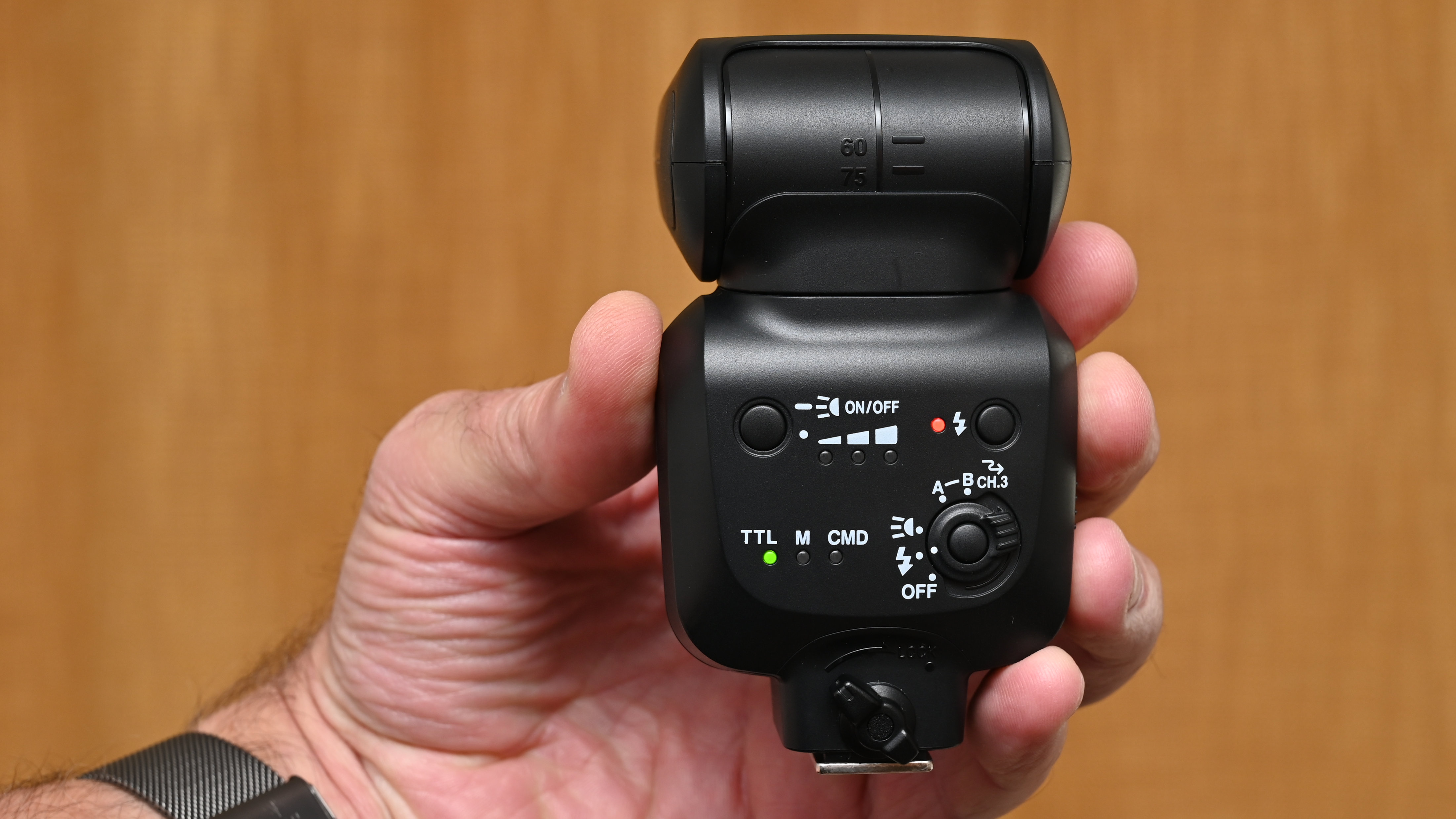
Around the back, the control panel is very simplistic and uses a few status LEDs instead of the more usual mono LCD panel. As such, most settings and adjustments need to be applied from menus in the host camera, including flash exposure compensation and manual power adjustments. An infrared wireless slave mode is featured (channel 3 only), but the commander mode only works with fairly recent cameras from the D5500, D7200, D750 and D810 onwards.
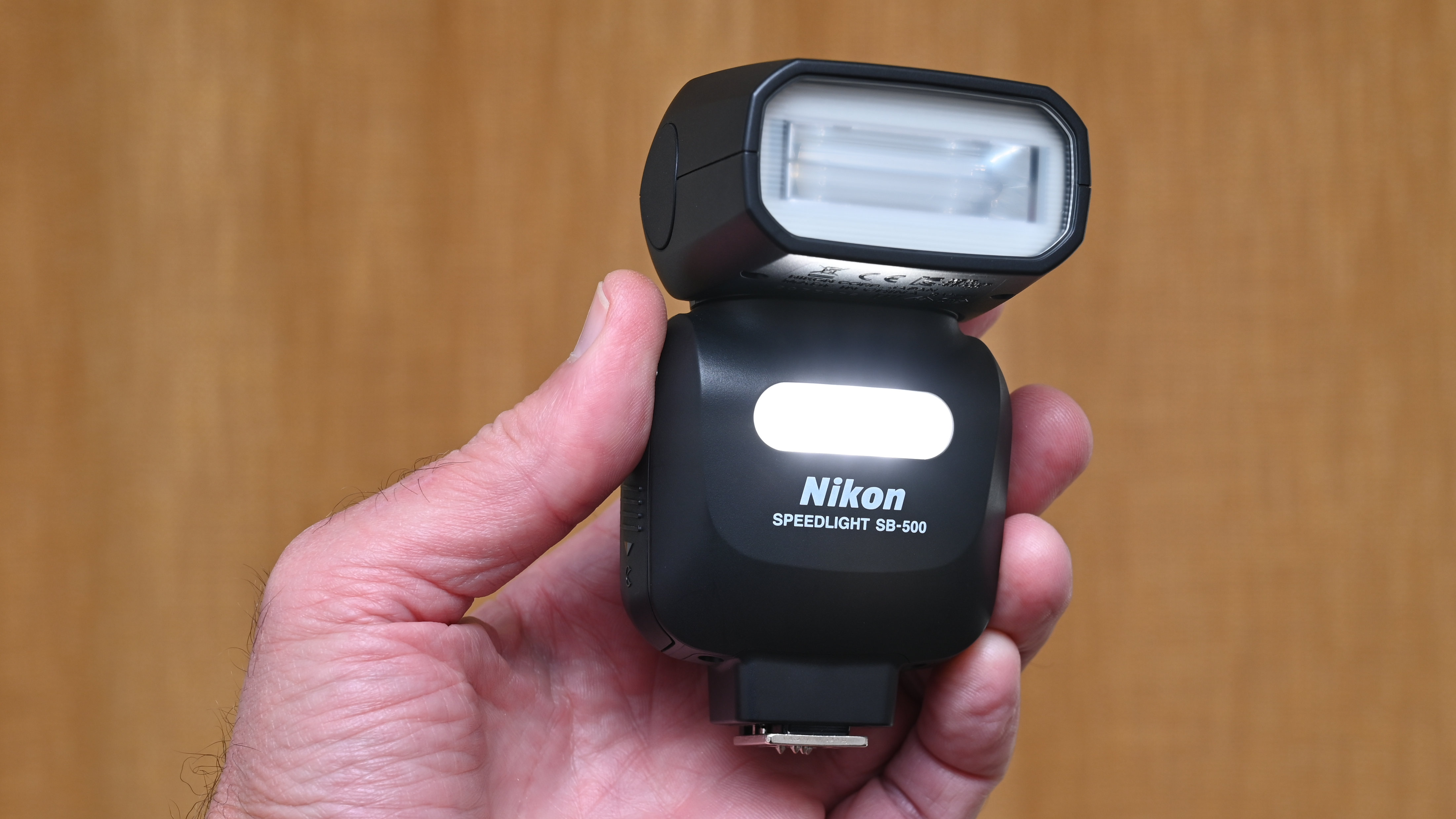
A plus point for short-range stills and video is that the SB-500 features a secondary LED lamp. A button on the rear panel enables you to switch the lamp on or off, as well as cycling through quarter, half and full power settings, the last of which gives a 100 Lux intensity, with the same beam angle as the flash tube.
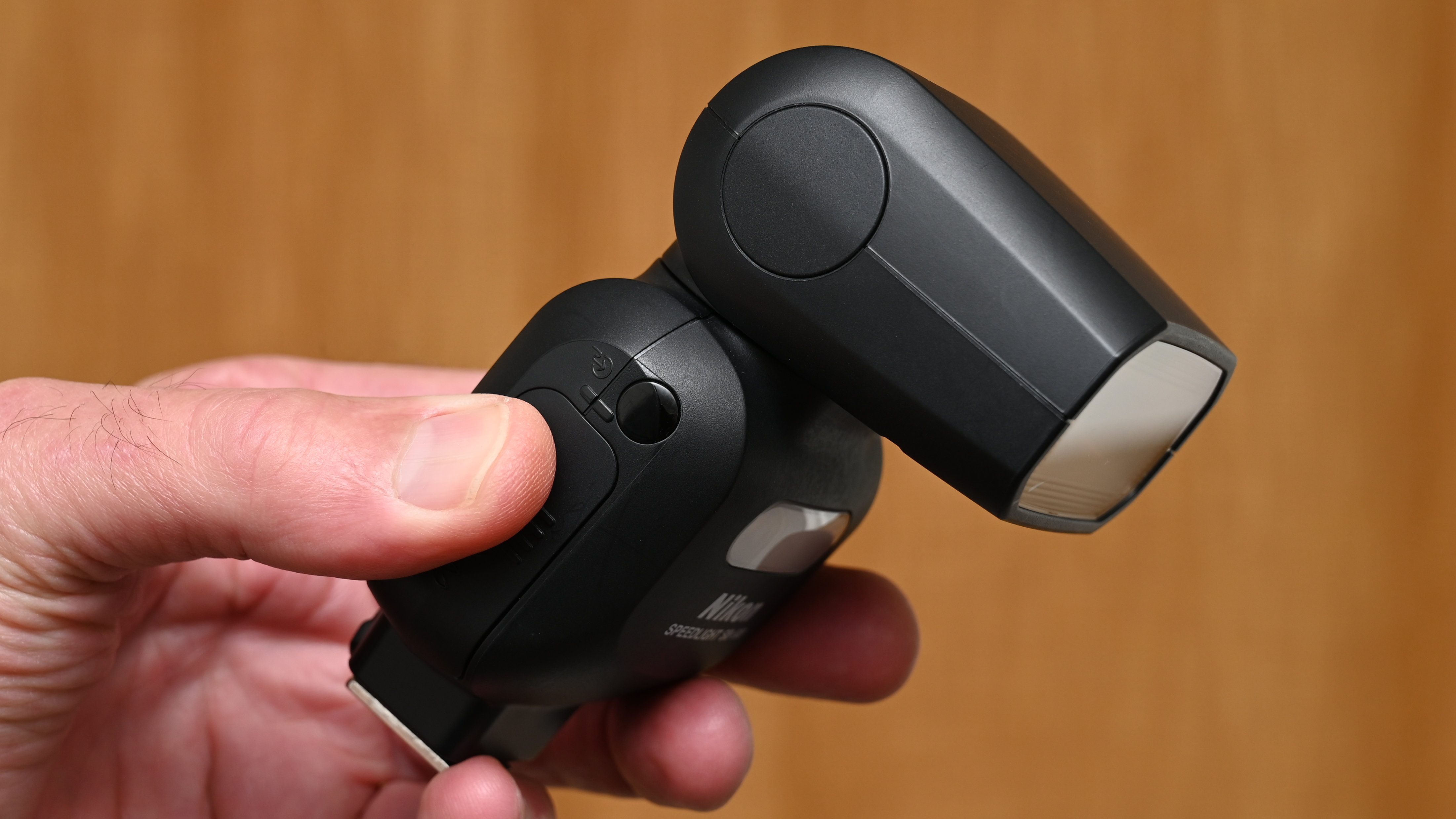
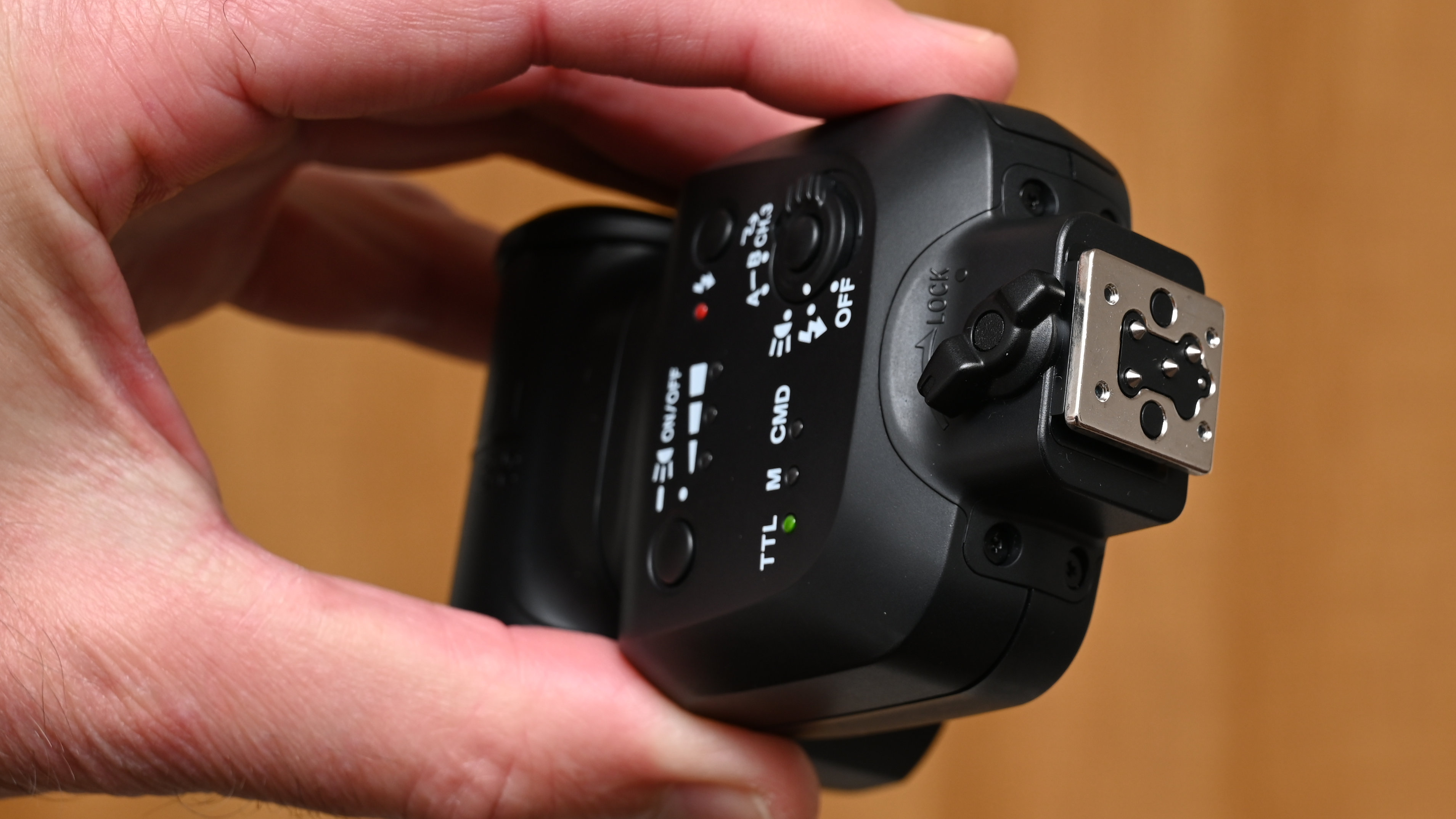
Performance
In our tests, the maximum flash intensity matched that of the more up-market Nikon Speedlight SB-700 at the same 24mm zoom setting.
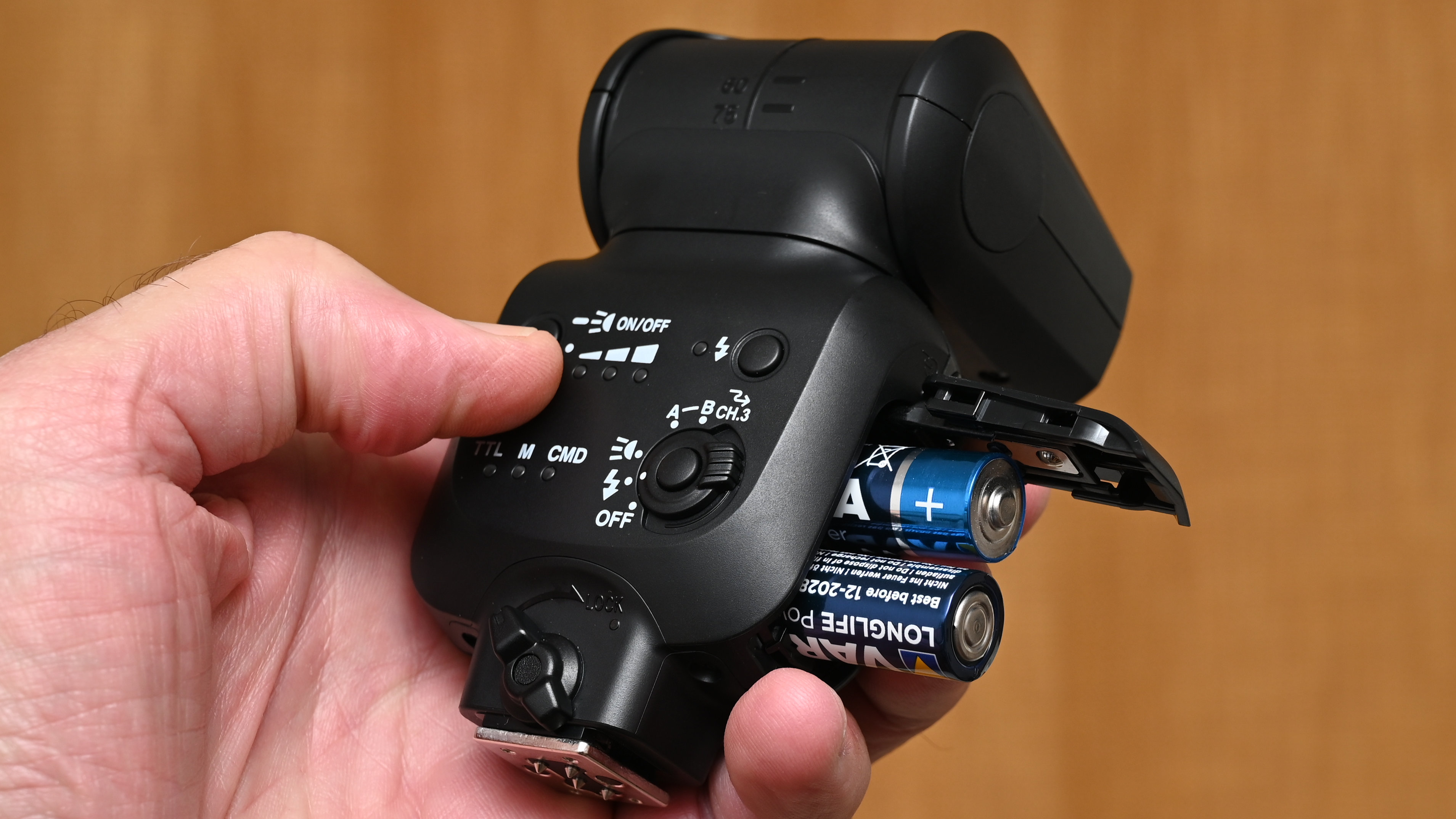
TTL (Through The Lens) flash metering is both accurate and consistent, and manual settings applied via the camera have a range of 1/128th to full power output. Recycling speeds after a full-power flash are relatively slow, typical of flashguns that only use two AA batteries, at 4.6 seconds for NiMH and 6.8 seconds with alkaline cells.
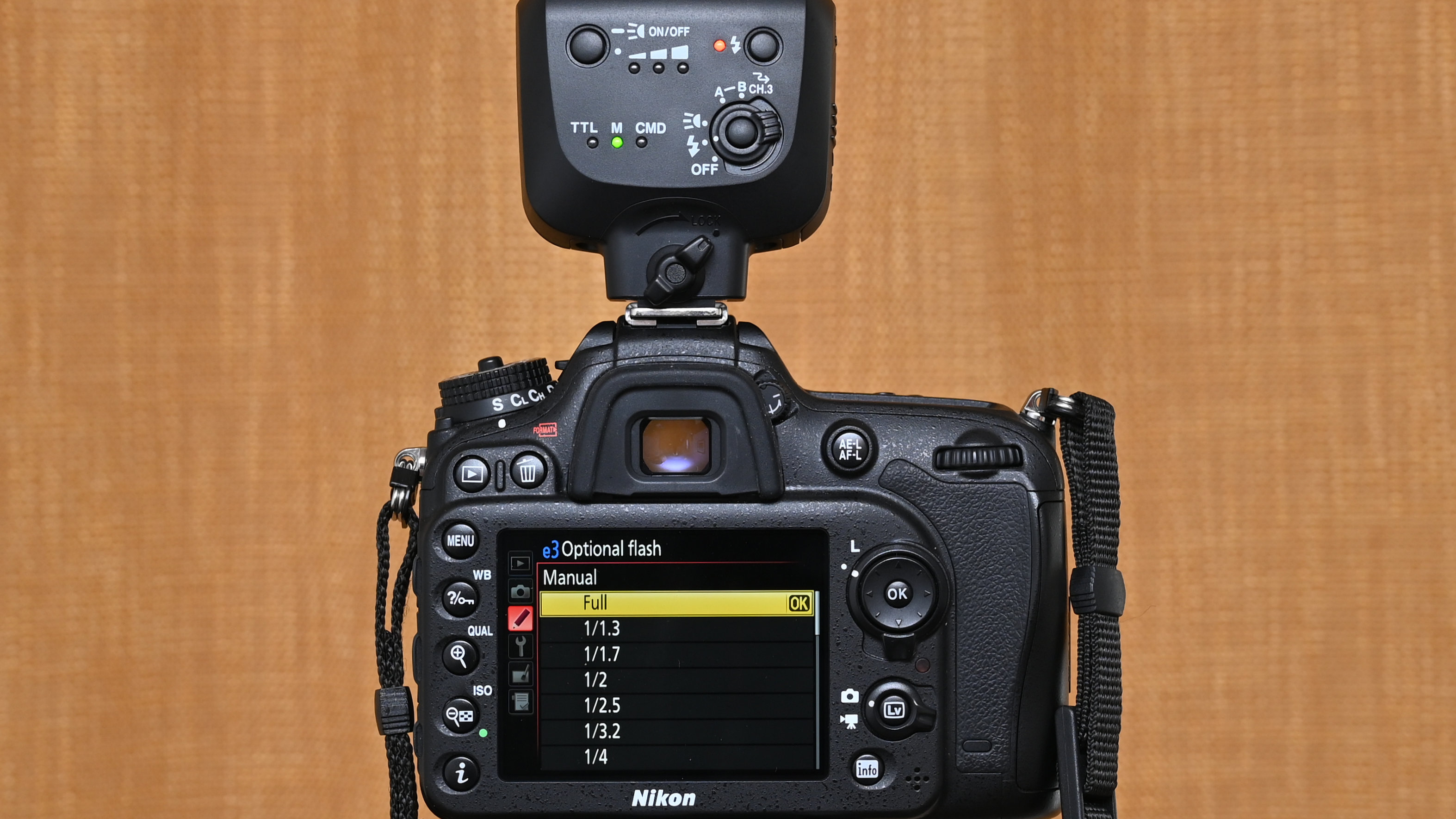
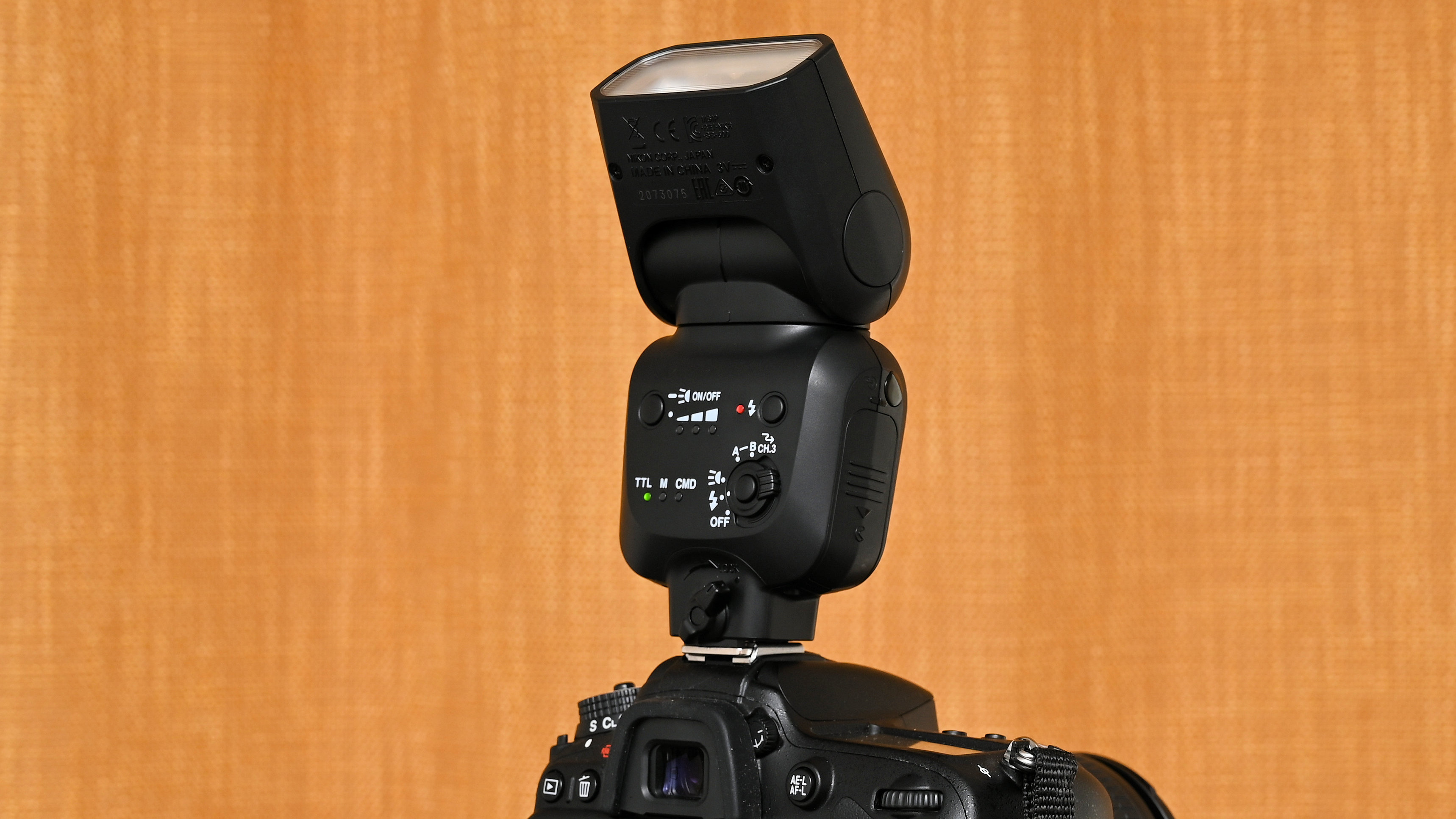
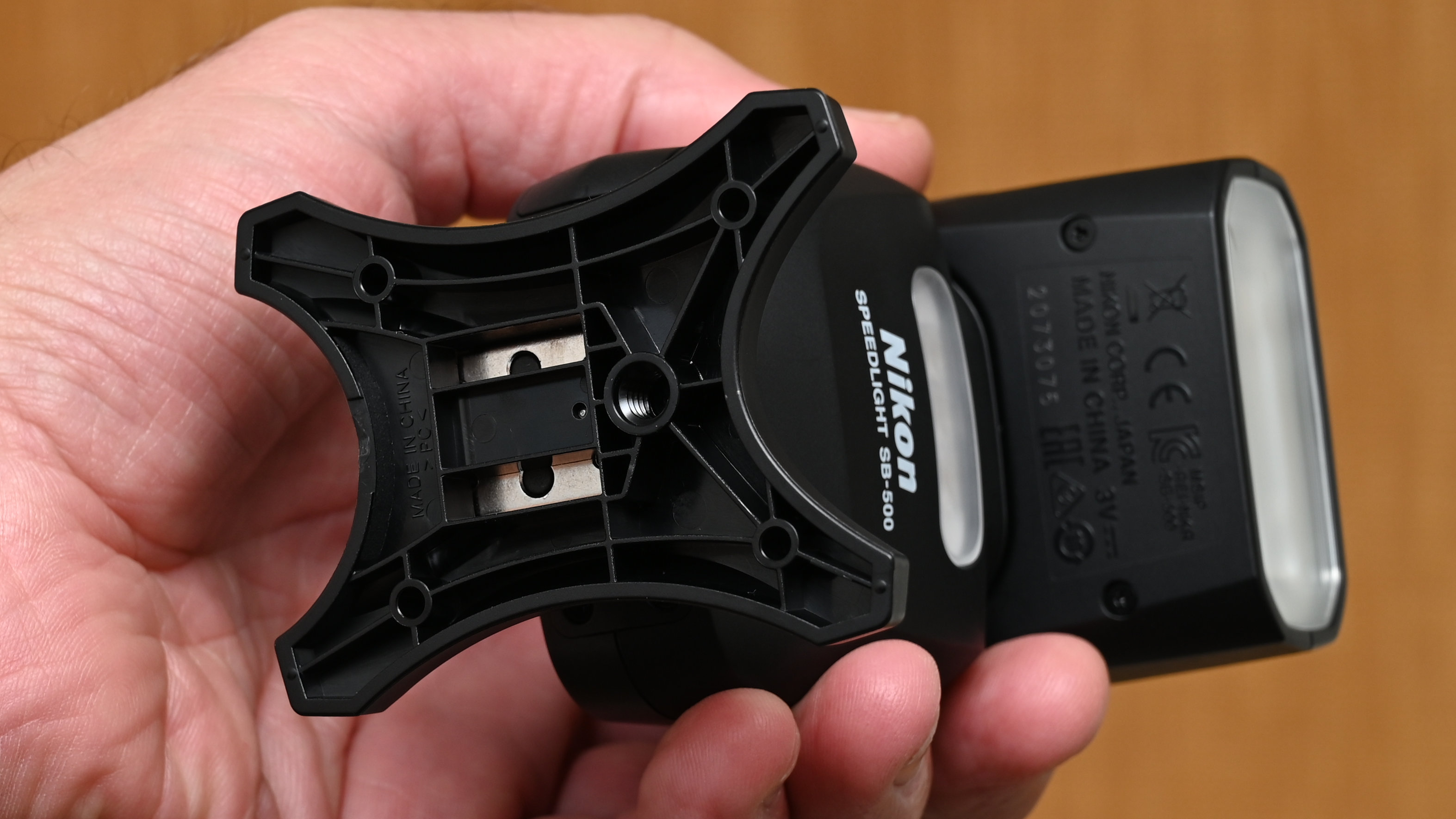
Lab results
We test all available features for each flashgun that goes through out labs. To test power output, we used a Sekonic flash meter placed at a distance of one meter from each flashgun. We check the complete range of manual power settings, in one-stop increments. Based on a sensitivity of ISO 100, the figures correlate directly with the Gn (Guide number). The results are double-checked by taking shots of a gray card with the appropriate lens apertures and using the camera’s histogram display in playback mode. This is done for flash zoom settings of 24mm, 50mm and 105mm (in full-frame terms), where available.
We also check the accuracy and consistency of electronic/intelligent TTL (Through The Lens) flash metering, and the speed with which each flashgun can recycle to a state of readiness after a full-power flash, using both Ni-MH and alkaline cells, or a Li-ion power pack where supplied.
Power output:
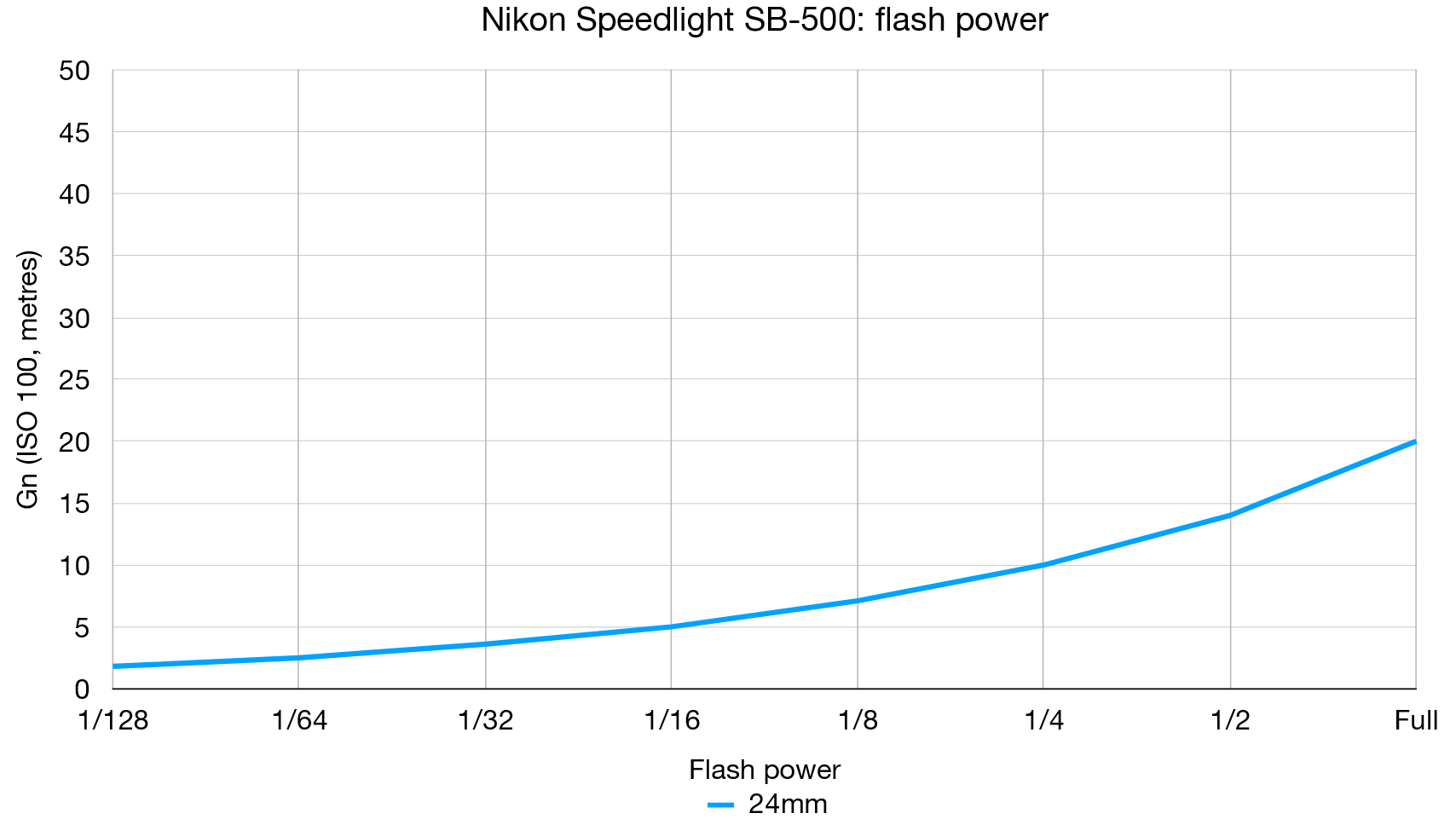
The diminutive SB-500 draws close to bigger flashguns with a larger Gn rating at their 24mm zoom setting.
TTL accuracy (+/-EV) 0
As usual with own-brand Nikon flashguns, TTL flash metering is consistently accurate with zero over or under exposure.
Recycle speed:
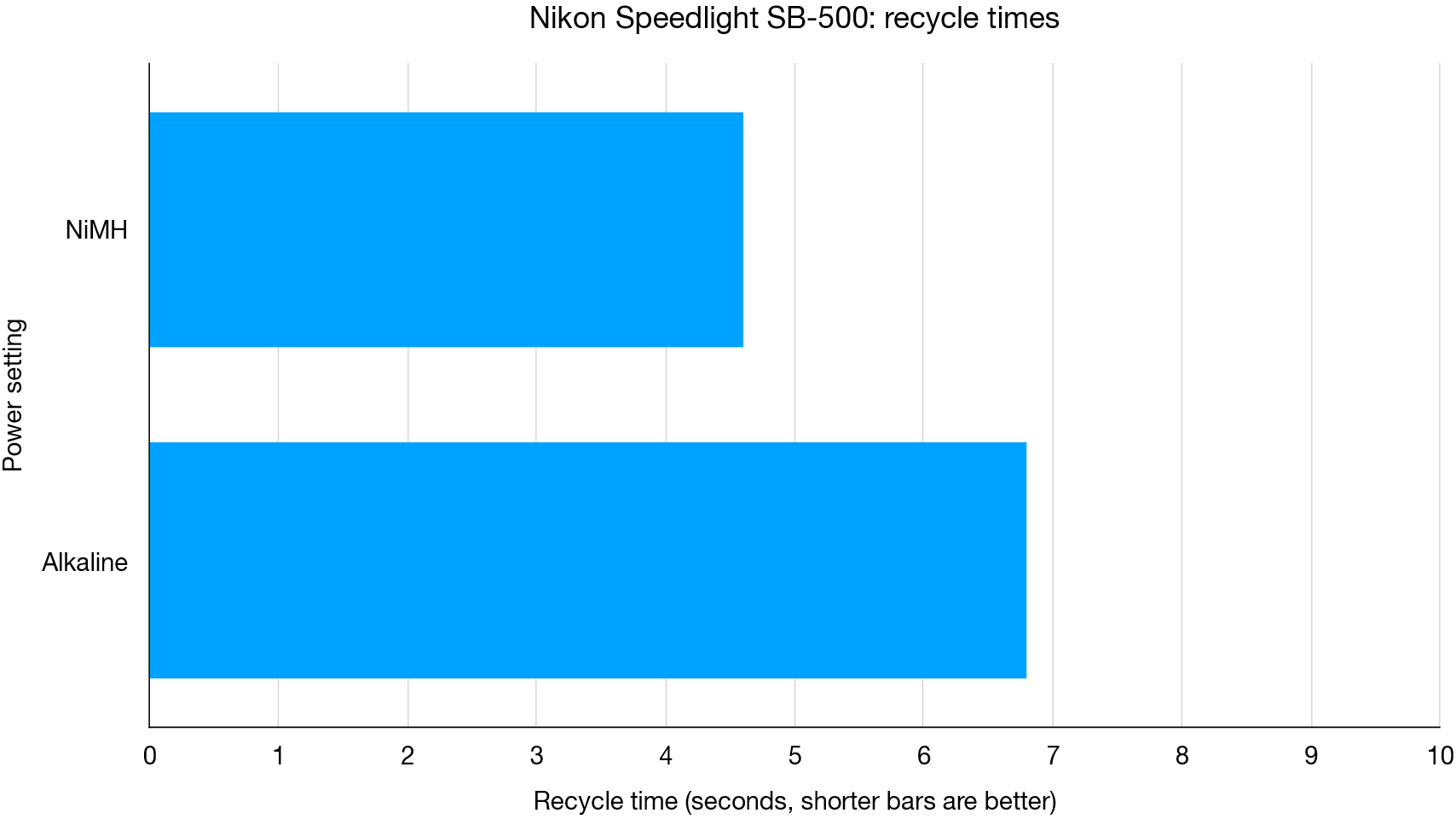
Powered from two AA batteries rather than the usual four, recycle speeds are fairly slow.
Verdict
This flashgun runs on two AA batteries and is just about small enough to slip into a coat pocket. It’s Nikon’s most basic Speedlight, with no zoom facility nor a rear info screen and barely any onboard controls, but it packs a decent punch in terms of maximum output. It also features a constant LED lamp with three power levels, handy for close-up stills and video. All things considered, it feels poor value at the price compared with independently manufactured Nikon-dedicated flashguns.

Read more:
• Best flashguns
• Best flash modifiers
• Best camera lenses to get
• Best Canon lenses
• Best Nikon lenses
• Best Sony lenses
Matthew Richards is a photographer and journalist who has spent years using and reviewing all manner of photo gear. He is Digital Camera World's principal lens reviewer – and has tested more primes and zooms than most people have had hot dinners!
His expertise with equipment doesn’t end there, though. He is also an encyclopedia when it comes to all manner of cameras, camera holsters and bags, flashguns, tripods and heads, printers, papers and inks, and just about anything imaging-related.
In an earlier life he was a broadcast engineer at the BBC, as well as a former editor of PC Guide.
